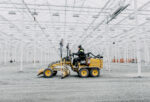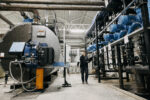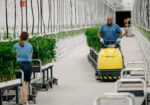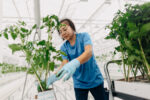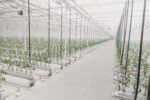
WTL Ramme
WTL Ramme
Shrimp production for a better food system.
Grown on land and close to the consumer.
In Ramme, Denmark we will delevlop a large land-based shrimp farm, that will be able to offer a mix of shrimp products to the European market.
WTL Ramme aims to supply the Nordics and parts of Europe with sustainably farmed shrimp, reducing reliance on high-impact imports and ensuring a stable, locally produced seafood supply. Scandinavian Aquaculture will run the operations to ensure efficient, high-quality shrimp farming with minimal environmental impact.
Later this year we will begin to work on the second greenhouse. Paired with Greenhouse 1 this will provide a big boost to Sweden’s domestic production of tomatoes, reaching a total of around 17,000 tonnes of annual production – about every fifth tomato eaten in Sweden.
WTL Averøy
Overview
Waste stream
Molasses*
Application
Shrimp
Produciton volume
TBA
Production phase II (tn)
70 000
Project start
2025
Investment (€)
123
Production start
TBD
*Molasses is one potential waste stream. The facility can use different agricultural and forestry byproducts to produce fungi-based high-quality proteins in high volumes. The project targets the growing demand for sustainable protein and is positioned to serve both domestic and international markets.


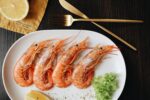
BIO3 Rubri rubrik
Operator
Currently, feed account for as 75% of a farmed salmon's carbon footprint, largely due to ingredients shipped across the globe. To change this, Norway has set an ambitious goal—to boost domestic production of sustainable feed ingredients by 500,000 tons by 2034, signaling a shift toward greater self-reliance and lower emissions.
BIO3 work for a responsible, circular food system that makes smarter use of natural resources, land, and energy.
By 2034 the Norwegian fish feed industry will require 500,000 tons of sustainable feed ingredients, aiming to increase sustainable feed sources to 100%.
BIO3 is working to shape a responsible, circular food system that makes smarter use of natural resources, land, and energy—while advancing fish welfare, climate goals, and global food security.
Sources: Aquafeed, Frontiers in Marine Science, Nofima, FAO
75 %
of a farmed salmon's carbon footprint comes from feed.
92 %
Current share of imported raw materials among Norwegian fish feed producers.
1/3
of global CO2-emissions comes from food production
WTL Ramme is a land-based shrimp farm, offering a more responsible approach shrimp production and, cutting Europe’s reliance on imported seafood.
Production via renewable energy sources and proximity to target markets reduces total emissions in shrimp production.
Highest bio-safety and cultivation standards coupled with greater quality control allow for consistent supply without the need for maintaining expensive large inventories in cold storages
With circular infrastructure, WTL Ramme sets a new benchmark for industrial-scale, biosecure shrimp farming with the first large-scale indoor shrimp facility in Europe.
Why do we need new proteins?
Growing Population = Growing Demand
By 2050, food demand is estimated to rise by about 50% to 70% compared to current levels. Current systems, particularly animal-based ones, are resource-intensive and cannot sustainably scale to meet this demand. We need to change the way we produce and consume protein.
Environmental Impact
The ecosystems of the planet can’t keep up with humanity’s desire for meat, eggs, dairy, soy and all the other conventional sources of protein. Conventional protein production, especially livestock farming, is a major contributor to greenhouse gas emissions, deforestation, water use, and biodiversity loss.
Resource Efficiency
Protein sources like beef or soy require vast amounts of water, land, and feed compared to alternative proteins, such as plant-based, microbial, or lab-grown proteins, which use fewer resources.
Food Security and Resilience
Climate change is threatening traditional farming systems by increasing the frequency of extreme weather events. Developing more sustainable protein production methods can help build resilient food systems less dependent on climate-vulnerable agriculture.
Economic Opportunities
The development of new protein technologies opens doors for innovation and economic growth. It creates jobs and investment opportunities in industries like precision fermentation and cellular agriculture.
Redefining shrimp production
Challange
Traditional sources like beef and poultry come with heavy environmental costs like deforestation, high water usage, and significant greenhouse gas emissions. The world needs alternatives that can meet nutritional needs without further straining the planet.
Seafood, like shrimp, offers a compelling solution. Rich in high-quality protein, low in fat, and packed with essential nutrients, shrimp has the potential to be a cornerstone of sustainable protein production. Yet, conventional shrimp farming, often linked to mangrove destruction and chemical overuse, has historically undermined its promise. The challenge, and opportunity, lies in reshaping the industry: moving towards land-based, circular production systems that harness industrial waste streams, use renewable energy, and are efficient in water use.
This is what WTL Ramme is aiming to do. The shrimp will be sold on the European market.

Means to make it happen
NorSea Atlantic
By utilizing access to infrastructure, zoned land, power, and water – with the ability to capture and reuse industrial waste streams – we enable rapid development and scalability right from the start. This creates truly circular production capacity for valuable commodities like food, nutrients, feed or chemicals.
What is molasses?
Challange
Molasses is a thick, dark syrup that is a byproduct of the sugar production process, primarily from sugarcane or sugar beets. It is created during the extraction and refining of sugar, where the juice is boiled to crystallize the sugar, leaving behind a nutrient-rich, viscous liquid.
Molasses is rich in nutrients like iron, calcium, potassium, and antioxidants, making it useful for food products, animal feed, fertilizers, and biofuels.
Project partners


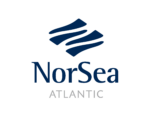

Welcoming Food Ventures
Operator
The greenhouses in Frövi will be operated by Food Ventures. A global leader in greenhouse growing, specialized in continuously supplying fresh and tasty vegetables, grown sustainably in high-tech greenhouses.
The project site is located in Ramme, Denmark
Ramme has all the requirements needed for our project. There are waste streams that we can use, green energy and a geographical location that enables is close to the ocean for sage in- and outtake of sea water.
Our collaboration with Skovgaard Energy, providing land, waste heat, electricity enables a very attractive symbiosis. The muncipality is also a key enabler in this project.
